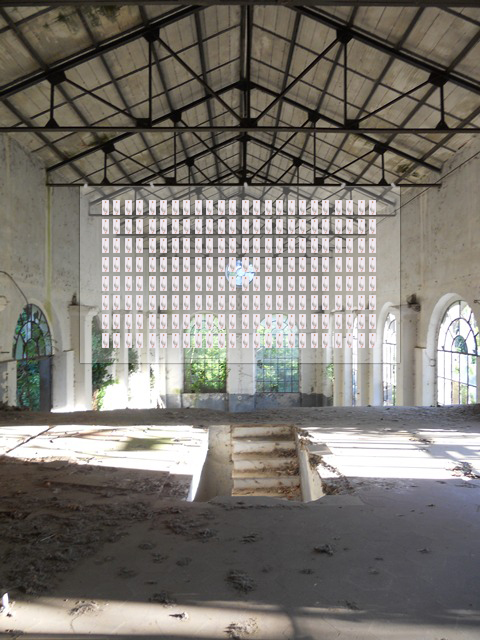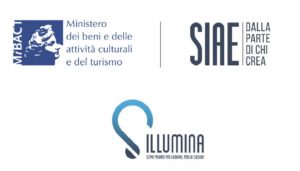10.000 oche (10.000 Geese)

ARTIST STATEMENT (ENGLISH TRANSLATION)
The project is formed with an installation of 10000 ID photos that portray the 10000 geese that are bred, on average, in intensive farming in Eastern Europe for plucking.
The ID photos will be in color, positioned next to one another, one on top of the other, and so on. They will be, then, stuck one by one by me on a panel of plexiglass or glass to form a big wall that will be situated in the middle of the location. The latter will be inside of a disused factory (a factory in which seamstresses mainly worked) which can’t be gray or dark in any way. It will be both in Italy and in a country in Eastern Europe where the production of Italian duvets are made. Everything must be proportional and the brightest and clearest possible, and above all, empty. Those who enter will see only the installation. The intent is not to create anything new, I only want to give a new opportunity for people to be able to choose whether to reflect on the theme of land exploitation, of the treatment of animals, of the abandonment of the big industry of “Made in Italy,” of the problems that have caused specialized craftsmanship in Made in Italy, of the emigration that all this involves, and on the importance that ethics has on the behavior of each of us, including the great entrepreneurs. How? First of all, the public will not be able to completely understand the sense of the final work if they don’t receive information on the process and research of which it is a consequence.
Ergo, the explanation will be for everyone but not for everyone. That means only those who are really interested, asking explanations for what they see, will be able to deepen and hope to understand to be able to reflect, even for just 10 seconds, on the social importance that these geese represent.
It is for everyone in the sense that the process must be explained in a clear way, while being able to understand both the worker and the most cultured of the public. Once you have learned the explanation of all the research, that addresses these issues in order:
1) the feathering process, from when it’s still on the animal to when it fills the quilt
2) where this processing happens
3) the economic risks and consequences, environmental, and emigration that this production creates in the zone in which it is applied
4) behavior and comparison with two Italian entrepreneurs completely different on the issue of whether or not to save the Made in Italy and example of how this already happens since one of the two already does it
An exchange could happen, if the visitor wants it: he could choose only one ID photo for free but in return he must make a pact with me to keep it as one keeps the photos of deceased loved ones in a wallet.
This is because, in the case that you buy a goose quilt not made in Italy, when it comes time to pay, opening the wallet you can find the goose in front of your eyes. I repeat, the intention is not to say or create anything new because: the use of the ID photos was born in the nineteenth century, the location is a factory that already existed before me, the theme is not invented, but even it has already been dealt by journalists in the past. I would like only to give another occasion to people to be able to think and choose how to behave, already from when they’re at the exhibit because they can, immediately, decide whether to inform themselves or not; successively, they have the opportunity to make a deal or not, they can decide if you keep it or if you break it by throwing, maybe, the ID photo like when you clean your wallet of old receipts.
I will present everyday in the opening hours of the exhibition because the installation cannot ignore the explanation that will also be in many languages, helped by interpreters.
—-
ORIGINAL VERSION (Testo originale)
Il progetto si formalizza con un’istallazione di 10000 fototessere che ritraggono le 10000 oche che vengono allevate, in media, negli allevamenti intensivi dell’est Europa per lo spiumaggio.
Le fototessere saranno a colori, posizionate una accanto all’altra, una al di sotto dell’altra e così via. Saranno, quindi, attaccate una ad una da me su un pannello di plexiglas o vetro per formare una grande parete che sarà situata in mezzo alla location. Quest’ultima sarà l’ interno di una fabbrica dismessa (fabbrica in cui lavoravano prevalentemente donne sarte) il quale non deve essere né grigio né scuro in alcun modo. Sarà sia in Italia che in un paese dell’est Europa dove avviene la produzione di piumini italiani. Tutto deve essere proporzionato e il più luminoso e chiaro possibile e soprattutto vuoto. Chi entra vedrà solo l’ istallazione. L’ intento è quello di non creare niente di nuovo, voglio solo dare una nuova occasione alle persone di poter scegliere se riflettere sul tema dello sfruttamento del terreno, del trattamento degli animali, dell’abbandono del Made in Italy delle grandi industrie, delle problematiche che hanno causato all’artigianato specializzato in made in Italy, dell’emigrazione che tutto questo comporta, e sull’importanza che ha l’etica sul comportamento di ognuno di noi, compresi i grandi imprenditori. Come? Innanzitutto, il pubblico non potrà capire a fondo il senso dell’opera finale se non riceve informazioni sul processo e sulla ricerca di cui essa è conseguenza.
Ergo, la spiegazione sarà per tutti ma non per tutti. Ciò significa che solamente chi è davvero interessato, chiedendomi spiegazioni su ciò che vede, potrà approfondire e spero capire per poter riflettere, anche solo 10 secondi sull’importanza sociale che queste oche rappresentano.
E’ per tutti nel senso che il processo deve essere spiegato in modo chiaro, affinché possa capire sia l’ operaio sia il più acculturato del pubblico. Una volta appresa la spiegazione di tutta la ricerca, che affronta questi temi in questo ordine:
1) processo della piuma da quando ancora è sull’animale a quando riempie il piumino
2) dove questa lavorazione avviene
3) rischi e conseguenze economiche, ambientali e di emigrazione che tale produzione crea nelle zone in cui si applica
4) comportamenti a confronto di due grandi imprenditori italiani completamente diversi sulla volontà o meno di salvare il made in italy ed esempio di come questo già succede visto che uno dei due già lo fa
Avviene, se il visitatore lo vuole, uno scambio: esso può scegliere una sola fototessera gratuitamente ma in cambio deve fare un patto con me affinché la tenga come si tenevano una volta le fototessere dei cari defunti, nel portafoglio.
Questo perché, nel caso in cui dovesse compare un piumino di piuma d’ oca non made in Italy, quando arriva a pagare, aprendo il portafoglio si ritrova l’oca sotto gli occhi. Ripeto, l’intento non è quello né di dire o creare nulla di nuovo perché: l’ uso della fototessere nasce nell’Ottocento, la location è una fabbrica che già esisteva prima di me, il tema non è inventato ma è addirittura già stato affrontato da giornalisti in passato. Vorrei solamente dare un’ altra occasione alle persone di poter pensare per poi scegliere come comportarsi, già da quando si trovano alla mostra perché possono, fin da subito, decidere se informarsi o no; successivamente, hanno l’ opportunità di stringere un patto o no, infine, possono decidere se mantenerlo oppure se romperlo buttando, magari, la fototessera come quando si ripulisce il portafoglio dai vecchi scontrini.
Io sarò presente tutti i giorni nell’orario di apertura della mostra proprio perché l’installazione non può prescindere dalla spiegazione che sarà anche in più lingue, aiutata da interpreti.
Florenart3 – Rinascimento digitale per la sostenibilità del contemporaneo (Digital Renaissance for contemporary sustainability).
The project is realized with the contribution of “Sillumina – copia privata per i giovani, per la cultura”.
